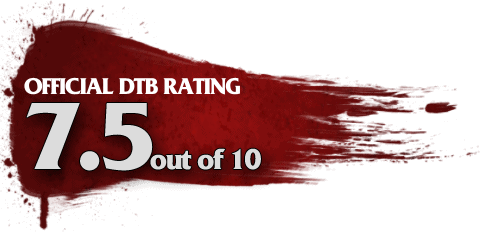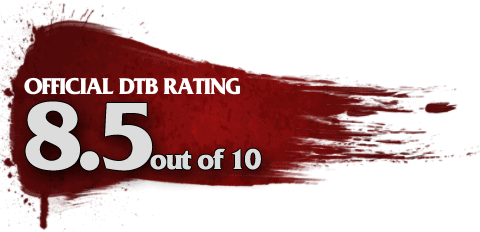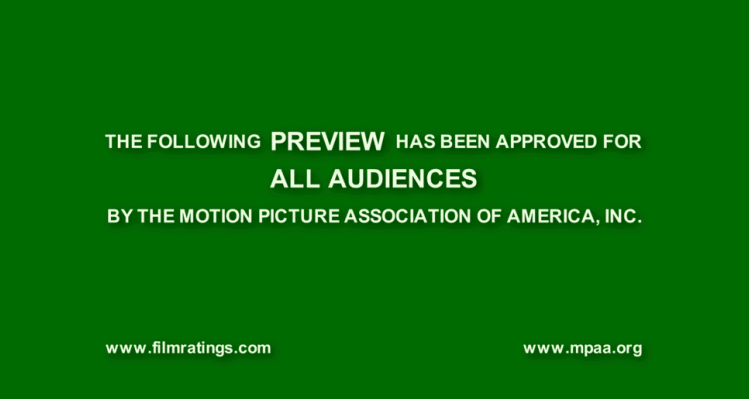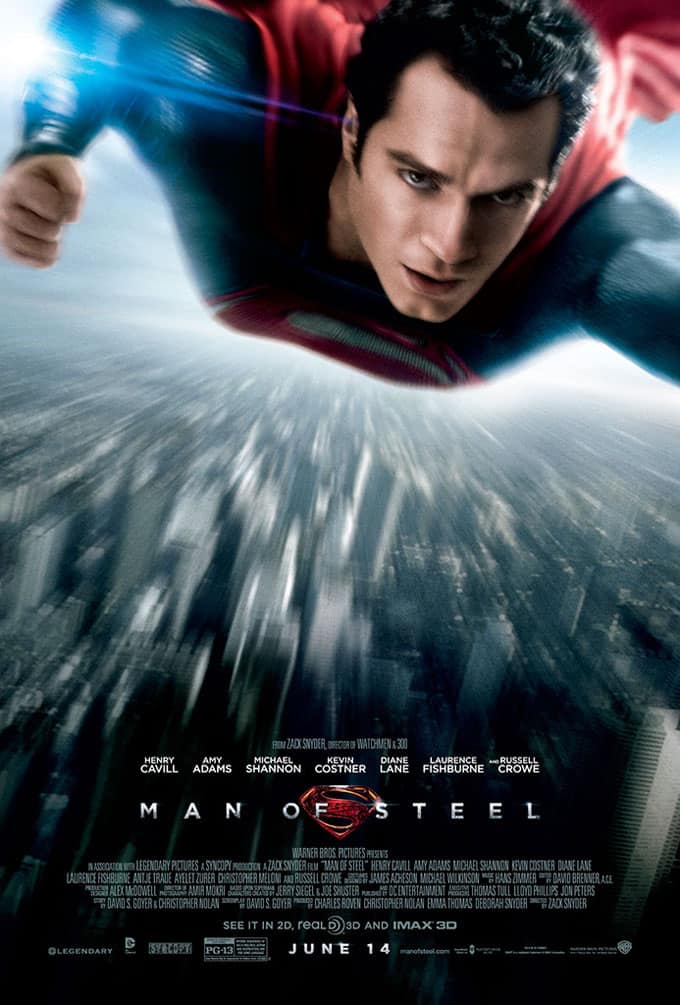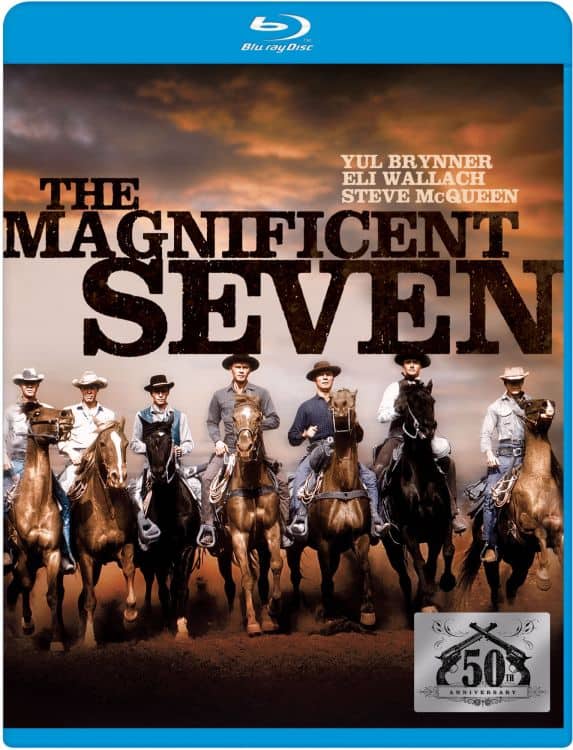
Blu-Ray Review: ‘THE MAGNIFICENT SEVEN’
The 1960 film The Magnificent Seven was one of the last rounds in the chamber of the American Western. In 1952 you had the Gary Cooper flick High Noon. In 1956 you had John Ford’s masterpiece The Searchers. Then, in 1959 you had the Howard Hawks western Rio Bravo. By 1960, the American western was on its last legs and a new wave of more stylized westerns was about to be ushered in. Akira Kurosawa, who was the source of inspiration for The Magnificent Seven with his samurai epic Seven Samurai, released a double dose of western infused “lone fighter” films in ’61 and ’62 with Yojimbo and Sanjuro, which went on to inspire Leone’s “The Man with No Name Trilogy.” The combination of Kurosawa’a films and Magnificent Seven’s darker elements certainly triggered the grittier “Spaghetti Westerns” that took over for the “American Westerns.” Let’s see if this film still stands as a cornerstone of the Western genre.
The Movie:
The ruthless Calvera (Eli Wallach) and his group of bandits have continually bullied a small Mexican farming town. Finally pushed to the edge, a few of the town’s people decide to go into a neighboring town to purchase guns. While in town, the three Mexican farmers stumble upon our anti- hero Chris (Yul Brynner). Chris suggests getting a group of gunslingers to go out and scare the bandits. After much convincing, Chris agrees to the little paying job and begins to assemble a team to help him on the mission. Steve McQueen, Charles Bronson, Robert Vaughn, Brad Dexter, James Coburn, and Horst Bucholz round out the seven of the title. The group travels to the village thinking that once the bandits see the gunslingers that they will move onto a new town to bully. Little do the seven know that they are soon in over their heads.
The Magnificent Seven is known for two things, and rightfully so: Its brilliant and iconic score by Elmer Bernstein and the phenomenal “up-and-coming” cast that breathes life into each of the characters. Bernstein has graced more than 150 films with iconic scores. Besides being one of the best western scores ever made, the score also is without a doubt one of the most recognizable in film history. What is the most unique aspect about the music is the fact that it actually sparks excitement into what are otherwise boring sequences. The film is known for its large-scale and perfectly staged final shoot-out. Aside from this sequence, not many bullets are fired in this more character driven western. Whether or not you are a fan of seeing classic tough guys like Branson, Coburn, and McQueen stand around and “shoot-the-shit,” will surely dictate your level of enjoyment of this film. This is not to say that the film is boring. In fact, I enjoyed watching people like McQueen eat up the scenery in every one of the shots he is in. If you watch this film, keep an eye on McQueen and watch his little quirky mannerisms throughout the film. Each of the exceptional cast members creates individual characters even if they only have a handful of lines in this large ensemble film. Yul Brynner creates a different type of hero. His all black wardrobe, European accent, and shaved head create a unique look that distinguishes him from the Gary Cooper and John Wayne heroes that came before him. In a lot of ways he presents the anti-hero that came later with Clint Eastwood. His dress combined with darker lines of dialogue is quite different for the time. For example, when Burcholz discovers a pretty Mexican lady hiding in the woods after the women and children were told to hide from the village due to the fact that the gunfighters might rape them, Brynner responds with, “Well, we might. But in my opinion you should have given us the benefit of the doubt.” There are instances like this one that make Brynner more of an anti-hero than a true hero. Once again, this, combined with some bloody violence in the climactic shoot-out, can be seen as the beginnings of the now renowned “spaghetti westerns.”
The Disc:
The film is presented in a beautifully restored picture quality that is miles above the two previously released DVDs. The colors are vibrant and clear yet still hold a little bit of the original film grain. There are times where I felt the picture quality in some scenes looked a little worse than the previous one. Other than some problematic shots, the only other minor problem with the visuals is the transitions between the scenes. The fade-ins and fade-outs are jarring because of the lack of attention given to cleaning them up better. Yet, this is a minor complaint to an otherwise high quality restoration of a fifty-one year old film.
The sound is even better than the picture. Bernstein’s score is given the most attention as every note is clear and robust. The dialogue track is slightly softer than the audio, which makes me think they could have mixed the two slightly better. In the entire film, there was only one sequence where I noticed extra unnecessary noise in the background. Overall, MGM nailed it with the audio.
The blu-ray is loaded up with extras that were previously released on the 2001 disc and the 2006 two-disc edition. With that in mind, the features on the blu-ray aren’t all that impressive. At least though, there is something to give people who didn’t already own the disc. First up, is the 2001 documentary “Guns for Hire-The Making of the Magnificent Seven.” This 47 min. long feature includes interviews with the cast, crew, and surprise interviews with people like director John Carpenter. Everything from the script development (originally it was going to be seven Civil War veterans not gun-fighters) to the tensions on set between the actors is covered in these extremely entertaining interviews. I highly recommend this. Second up is a 13 min. documentary entitled “Elmer Bernstein and The Magnificent Seven.” This feature follows a film score historian who goes track by track through the impressive score by Bernstein. On the surface this sounds fairly boring, but his insights and knowledge of music make this an unexpected gem. Third up is a 15 minute feature, “The Linen Book: Lost Images from The Magnificent Seven.” Apparently, a salt mine in Kansas City was home to a rare book of photos taken during the filming. This documentary mainly follows actor Eli Wallach as he flips through the book and shares stories about the making of the film. Honestly. . . I love Wallach, but this is kind of a throw-away. Next up is an audio commentary with James Coburn, Eli Wallach, and producer Walter Mirisch. The three of them are fun to listen to if you are a die-hard fan of the film. A lot of the conversations revolve around the importance of director John Sturges. Lastly, we are treated to a handful of trailers and a comprehensive still gallery.
Overall:
Like I previously stated, if you enjoy these classic actors, most likely you will get a kick out of seeing all of them assembled on the screen together. For those used to the more graphic and violent westerns depicted on the screen today, you might be a little under- whelmed with the whole affair. I can’t say that I blame you. In no way does this match Kurosawa’s samurai classic. The film has one too many cheesy one-liners, a middle-half that drags with a forced love story and excessive training montages, and a story that fails to ramp up the threat level of Calvera and his men. Thankfully there are just as many positives to outweigh some of these minor complaints. There is a reason The Magnificent Seven is so highly regarded. Even though I feel that director John Sturges made a more solid film with his later 1963 classic The Great Escape, I applaud the man for making a more solid and interesting film than what was most like a fairly flat and life-less script. MGM has put together a nice package for fans of the film. Western lovers will appreciate the level of detail in the enhanced picture, even if they have already seen and heard all of the extras found on this disc.

